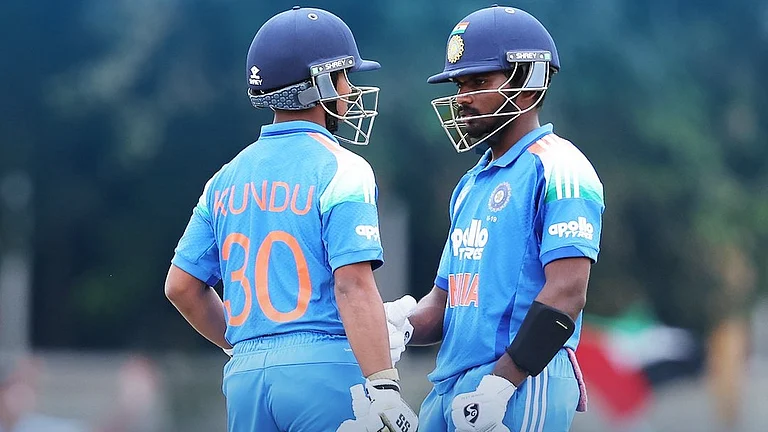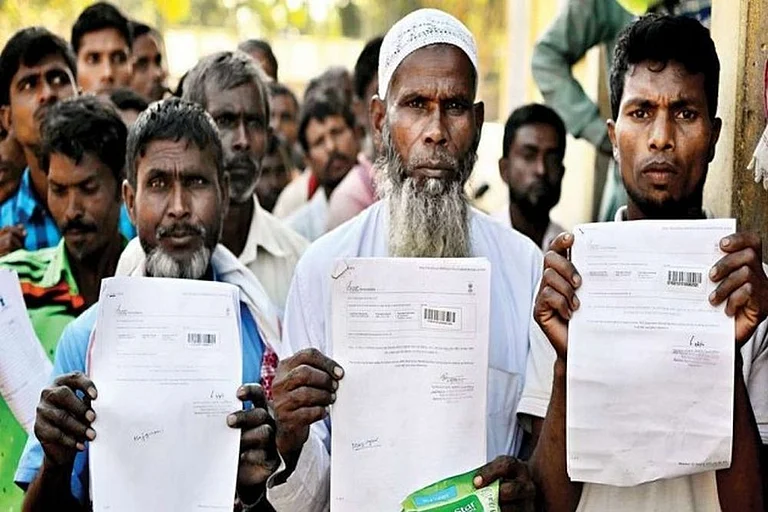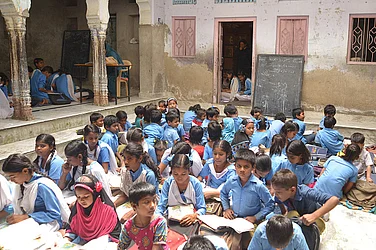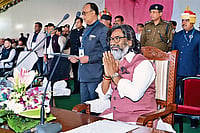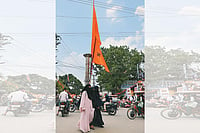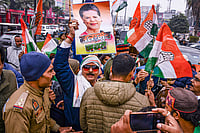Nirav (name changed on request), never realised that his lack of English-speaking skills would make him a laughing stock in the class unless he took admission to the prestigious University of Calcutta to pursue his graduation in Journalism. Being the topper of his school back in Midnapore, the southern district of West Bengal, he was quite sure of his competence to critically engage with the subject- a basic requirement for his course. But it was not enough. “The teacher asked me some questions in English. I understood it but started responding in Bengali. Suddenly, the class broke into laughter. The teacher, however, didn’t laugh; his was a brutal smirk,” recalls Nirav, now in his 30s.
As his face turned red and he silently sat back on his bench only to endure the humiliation for the rest of the period, his friend advised: ‘Learn English, otherwise, get ready to be judged. “I didn’t know whether it was ragging or not. But for years it stayed with me until I adopted the skill to speak English- sometimes better than them. Still, sometimes it hits me back as I try to frame a sentence. Is it grammatically, correct?”, asks Nirav who has now been working with different National media for almost a decade.
Such silent and subtle bullying that Nirav and many like him faces never gets registered as a case of ragging; nor they are considered enough offensive to at least be reprimanded. The silence of his teacher accompanied by a ‘smirk’ further legitimises it. As the recent death of an undergraduate student of Jadavpur University (JU) allegedly due to ragging by seniors has again fueled the debates over this deep-rooted problem, one can’t help but look into the social cleavages- caste, gender and class that shape the everyday bullying- sometimes culminating in institutional ragging.
The deceased student was from the Nadia district and joined the prestigious university to study Bengali literature. He was not allotted a hostel room and was sharing one with a friend. Days before the fateful night of August 9 when he allegedly jumped off the second floor of the hostel building, he even called his mother and told her that he wanted to share several things. While the Police have already arrested 12 students- both former and current- the primary investigations indicate that he was paraded naked and faced sexual slurs before the incident. Reports make it clear that it was the systematic bullying of the student that led to such an unfortunate incident.
According to the official data submitted by Annapurna Devi Yadav, the Union Minister of State (MoS) for Education in 2021, in response to a question in Loksabha, the number of complaints against ragging between 2018 and 2021 stood at a staggering 2,790 among which action had been taken in only 1,296 cases.
Notably, in 2020 and 2021 when the colleges were closed due to COVID-19-induced lockdown, the number of cases were 219 and 485 respectively that included mostly online harassment. It significantly points out that bullies don’t need any physical space or campus structure to perpetrate violence. So, the monitoring and surveillance within the campus might not be as helpful as it is made out to be.
The Unregistered Violence: Everyday Bullying
However, registered are the cases that reach a certain intensity. But for the people like Nirav, it’s an unaddressed social reality. While the rural-urban divide and class play a huge role in shaping the prejudices of the perpetrators, the significance of caste and gender is undeniable. Virendra Kumar, a doctoral scholar at Ambedkar University Delhi, says, “In their educational journey the ‘quota students’ are bullied by so-called upper caste and others because of merit-debate both within and without the class. They make fun of their perceived ‘low merit’ and receiving taunts is an everyday affair. Eventually, SC and ST students are excluded from the group. They feel alienated. This alienation in the long run leads to a surge in the drop out of category students. All govt data on dropout shows this trend.”
The students of ‘so-called’ progressive campuses like Jawaharlal Nehru University (JNU) also witness regular caste discrimination. “The caste-based English-knowing elite groups will subtly exclude you. It is so implicit that people from privileged caste would never understand,” says a JNU student on the condition of anonymity. “Psychological harassment goes unnoticed by administrations and when Dalit students lose hope from all quarters, they commit suicide,” adds Kumar.
The prevalent prejudices over gender and sexual identity also act as deterrence for the sexual minorities on the campus. Trishanu (name changed on request) while sharing his experience in one of the most prestigious colleges in Kolkata, says, “I was being called ‘ladies’ due to the way I walk or behave. They used to mimic me. I felt extremely humiliated. Most of the time it ended with, ‘Aree moja korchilam toh!’ (It was for fun only)”. The UGC guidelines, published in 2009, also consider ‘homosexual assaults’ as a separate act besides other acts that constitute the broader definition of ragging.
Supreme Court in 2001 while talking about the cause of ragging said, “The cause of indulging in ragging is deriving sadistic pleasure or showing off power, authority or superiority by the seniors over their juniors or freshers.” The mentality of rag is embedded in a society that is inherently violent.
Sociologist and former professor of JNU Avijit Pathak says, “The psychic perversion or violence implicit in ragging cannot be seen in isolation. Think of the way these youngsters are growing up in this violent society. Violence is everywhere--in the social psychology of hyper-nationalism, in the cult of narcissism and authoritarianism, in the culture industry, and in social media. Violence is normalized. In a way, tenderness is seen to be some sort of 'effeminate' weakness amid the all-pervading hyper-masculine aggression. Can the psychic perversion we see among the 'dadas' or 'seniors' in university hostels be separated from the violence of authoritarian masters who dominate the political sphere?”
The lack of compassion and solidarity among students in a market-oriented education system is also responsible for such brutal acts. Coaching centres, MCQ-centric standardized tests, and crude marketization have changed the worldview of the entire generation transforming young minds into atomized and ethically and spiritually impoverished warriors engaged in social Darwinism. And this is violence. Ragging is not inseparable from this ugly educational practice, adds Pathak whose works on pedagogy have a huge impact across academia.
Can surveillance be the way out?
When the violence is so embedded, can it be confronted through CCTV surveillance? One of the students of JU who during his student days faced ragging, on the condition of anonymity says, “It will further embolden the university authority against the students. The campus needs sensitization, not surveillance.”
According to Pathak, “Instead, the more you install CCTV cameras the more you break the chains of communication. Our turbulent campuses need trust, dialogue, communication and the ethics of care--not surveillance devices.” Notably, there have been studies that show that the density and implications of surveillance cameras do not have any necessary correlation with the crime rate.
In 2020, Surfshark in the data report showed that the crime intensity doesn’t actually decrease with the increase in CCTV cameras. New Delhi, Indore, Hyderabad and Chennai though have the highest numbers of CCTV cameras in the country, but their rank in the crime index remains higher than Kolkata, Bangalore or Kochi which have less intensity of surveillance cameras.
Against this backdrop, Kumar thinks that there should be caste sensitization courses at UG and PG levels and students should be promoted only if they pass through it. “Not CCTV cameras, not politically appointed VCs, but only the creative merger of dialogic teachers and awakened students can combat ragging or other ugly practices that have caused great damage to some of our leading universities,” adds Pathak.








